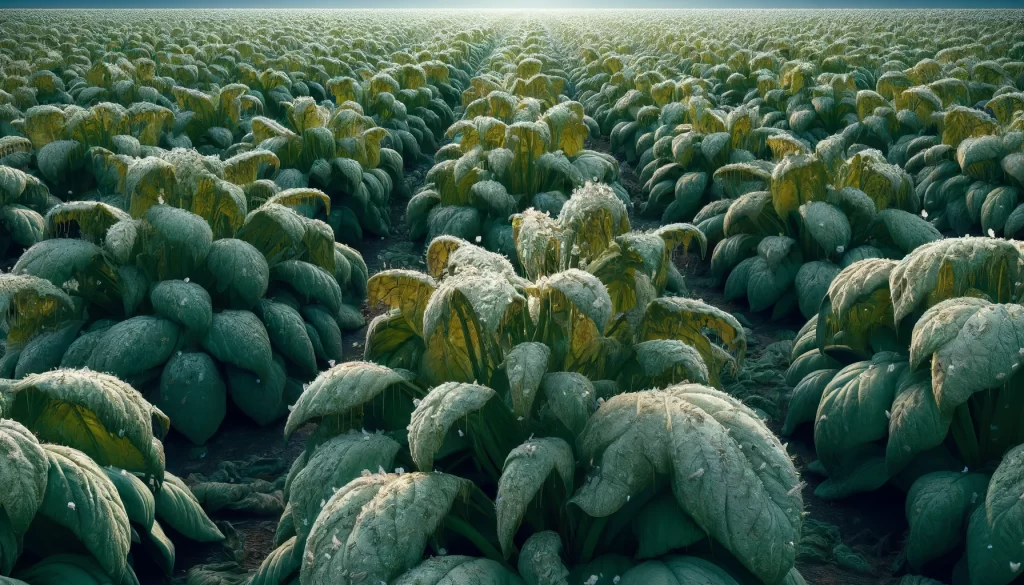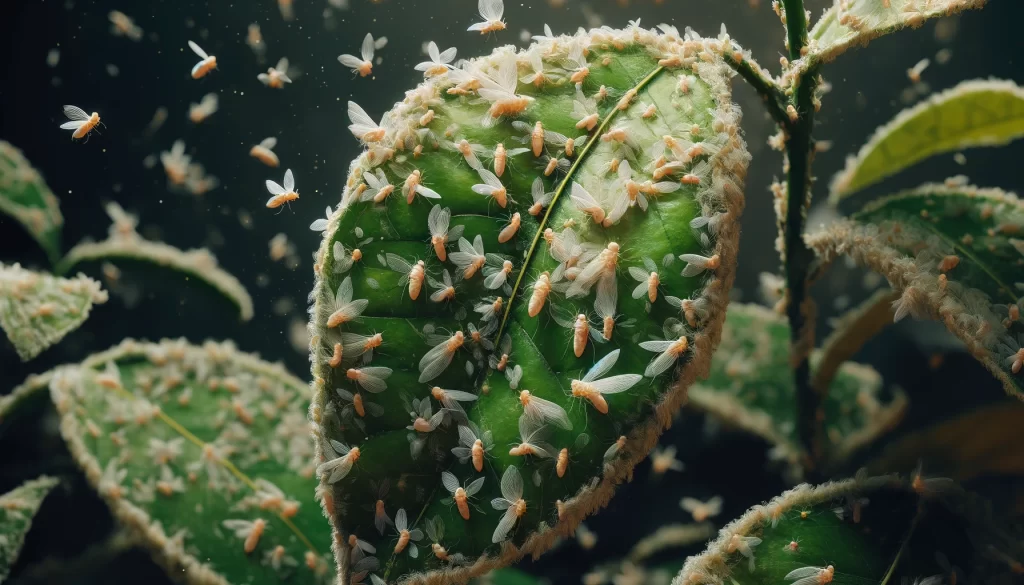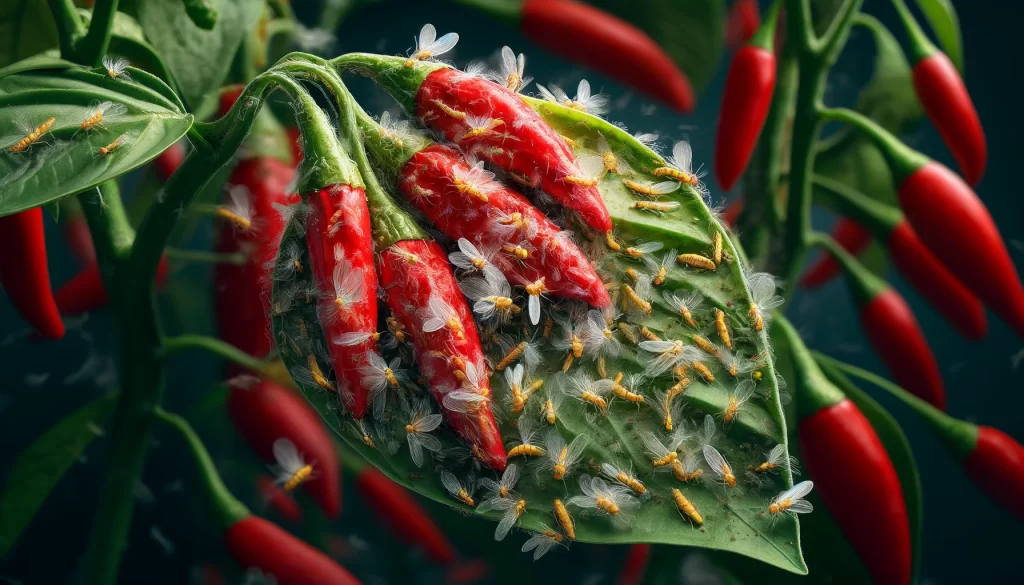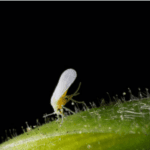Whiteflies, also known as white flies or aleyrodids, are small insects belonging to the Aleyrodidae family. They are named for their appearance: small adults of white or yellowish color, about 1-3 mm in length, with membranous and dusty wings.

These insects are commonly found in warm climates and are significant pests in agriculture and gardening. They feed on plant sap, using their mouthparts to pierce the leaf surface and extract nutrients. In addition to directly damaging plants, whiteflies can also transmit viral and fungal diseases through their feeding.
Whiteflies are often a problem in greenhouse crops and outdoor crops. In addition, they can be difficult to control due to their rapid reproduction, resistance to some pesticides, and ability to develop resistance to insecticides.

Damage Caused by Whiteflies
Whiteflies can cause a variety of damages to crops, both directly and indirectly. Some of the negative effects they can have on plants include:
- Weakening of plants: Whiteflies feed on plant sap, which can weaken them by reducing their ability to produce and store nutrients. This can result in poor growth, reduced vigor, and increased susceptibility to other diseases and pests.
- Reduction in photosynthesis: Whitefly feeding can interfere with the plants’ ability to perform photosynthesis efficiently. This can lead to a decrease in sugar production and ultimately a reduction in crop yields.

- Transmission of diseases: Whiteflies can act as vectors of viral and fungal diseases, transmitting pathogens from one plant to another as they feed. This can result in rapid spread of diseases in crops, causing significant damage and economic losses.
- Production of honeydew: Whiteflies excrete a sugary liquid known as honeydew while they feed. This honeydew can coat the surface of leaves and provide an ideal medium for the growth of fungi such as sooty mold, which can further reduce the plants’ ability to perform photosynthesis.
- Aesthetic damage: In addition to physiological effects, severe infestations of whiteflies can make plants look unattractive. Leaves may turn yellow, wilt, or dry out prematurely, negatively affecting the appearance of crops, especially in ornamental plants.

Control Methods:
- Cultural Control: Keeping greenhouses and fields clean can significantly reduce the population of whiteflies. Removing weeds and plant debris is also crucial.
- Biological Control: Using natural enemies such as parasitoid wasps (e.g., Encarsia formosa) and predators (e.g., ladybugs) can be very effective.
- Chemical Control: The use of insecticides must be careful and selective, as whiteflies can quickly develop resistance. Products specific for whiteflies should be used and active ingredients alternated.
- Physical Barriers: In greenhouses, the use of screens and other exclusion methods can be beneficial to prevent the entry of whiteflies.
- Yellow Sticky Traps: These traps can help both in monitoring and reducing adult populations.

Natural Methods Against Whitefly:
Here are some remedies you can use against whiteflies in a more natural and environmentally friendly way:
Soapy water: Mix a solution of water and mild soap (preferably liquid soap) and spray it on infested plants. The soap will suffocate the whiteflies and their larvae on contact. Repeat the application every few days as needed.
Neem oil: Neem oil, derived from the seeds of the neem tree (Azadirachta indica), has insecticidal and repellent properties. Dilute neem oil in water according to manufacturer’s instructions and spray on infested plants.
Garlic extract: Garlic contains sulfur compounds that can repel whiteflies. Crush several cloves of garlic and let them soak in water for a few hours. Then, strain the solution and spray it on the affected plants.

Conclusion: The whitefly is a persistent and resilient pest, but with a combination of cultural, biological, and chemical practices, its impact on crops can be minimized. Constant vigilance and preventive measures are essential to avoid severe infestations and to protect the health and productivity of our crops.
 AgronoBlog – Agriculture Blog
AgronoBlog – Agriculture Blog 


